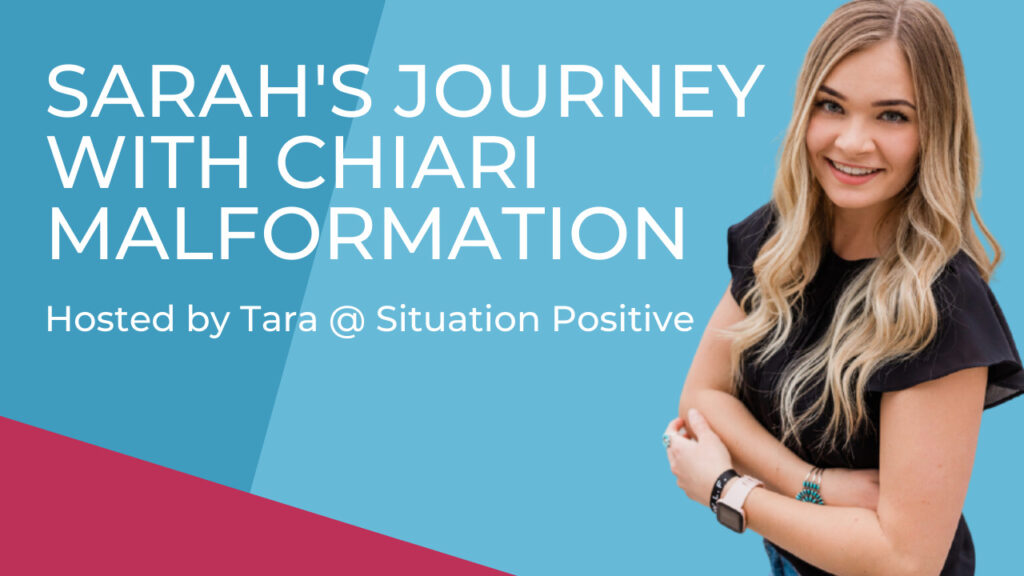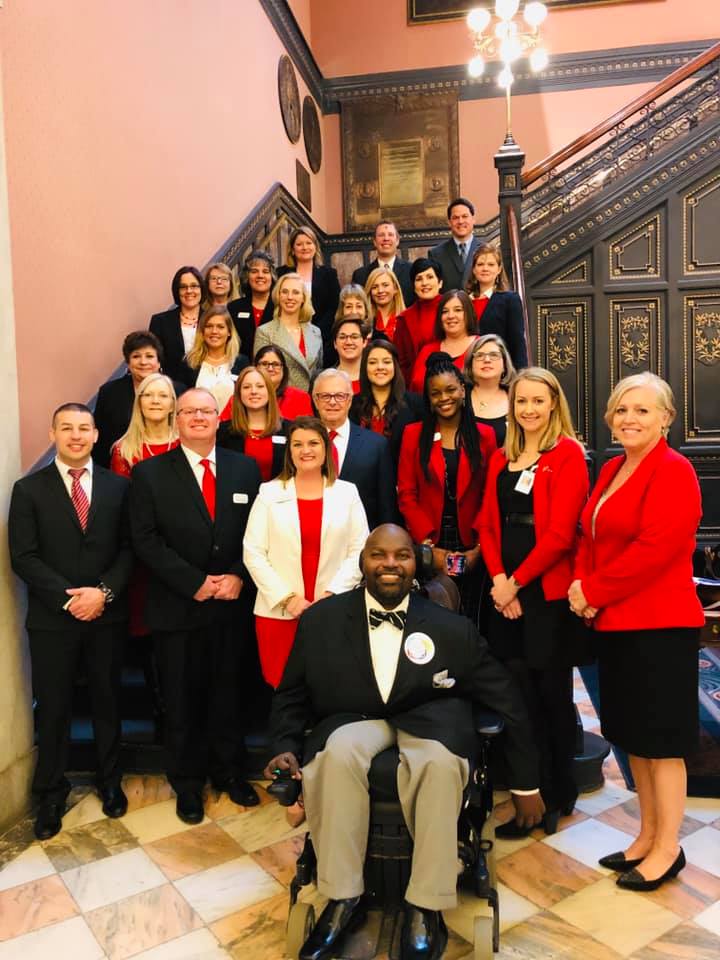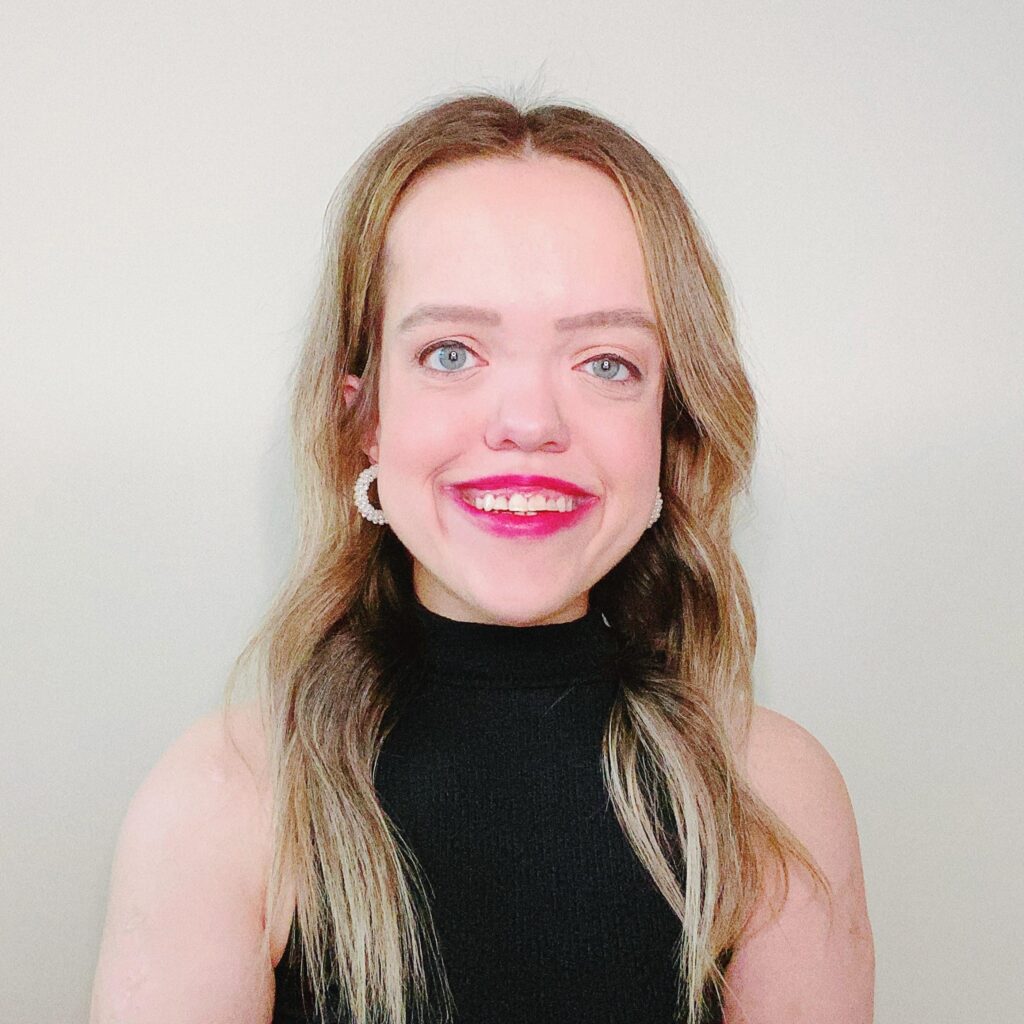At the tender age of fourteen, Sarah Kash learned that she needed brain surgery for Chiari malformation, a condition where the brain tissue extends into the spinal canal. In this interview, Sarah explains what it is like to live with this chronic illness. She discusses the diagnosis, her brain surgery experience, and how she is today. You can read the interview below or click the video to watch it. The interview is also available on our podcast.
Tara Tingey (Host): Hi, welcome to Situation Positive, a positive community for those affected by chronic illness. I’m Tara Tingey, your Positivity Partner, and we’re joined by special guest Sarah Kash. Sarah, how are you today?
Sarah Kash (Guest): I’m good, how are you?
Tara: Good thanks, so go ahead and introduce yourself.
Sarah: So, I’m Sarah I’m twenty-three I was born and raised and still living in Tempe, Arizona. I’m diagnosed with Chiari malformation with a fourteen-millimeter herniation with syringomyelia, which is the development of a fluid-filled cyst (syrinx) within your spinal cord, all the way down the T10. I also have ulnar neuropathy, which occurs when there is damage to the ulnar nerve that travels down the arm to the wrist, hand, and fingers, in both arms and a tethered spinal cord.
Tara: Wow! Those are a lot of big words. Tell us a little bit more about your diagnosis and what it means to those of us who may not know.
Sarah: Sure, Chiari malformation is basically, in simple terms, when your brain is falling out of your skull. You’ve got your spinal cord flowing fluid up into your brain and it comes all the way up. There’s a hole at the base of your skull and cerebellum, which is the bottom portion of your brain. Your brain falls into the hole. That’s what my herniation is and it’s a fourteen-millimeters descent down into the hole. This is clogging the spinal fluid flow to my brain and is what caused the syringomyelia. The blocked spinal fluid was standing still and my spinal cord ended up pushing on my nerves causing a lot of nerve damage. I experience daily nerve pain. The syrinx, my fluid-filled cyst, slows down at my T10 vertebrae and that is what I had surgery on. Now that’s cleared up. The tethered spinal cord means my spinal cord is stuck on my spine. This is not as big of an issue as the others. Lastly, my ulnar neuropathy is pinched to the point of causing some nerve damage. So those are all kind of related to one another, but separate issues on their own. Chiari causes syringomyelia and they don’t really know if that is genetic or if you’re born with it. They’re not really sure but there’s a lot of research going on with it but it’s something I was definitely born with. It doesn’t really develop, rather it’s caught at different stages of life depending on the person and their symptoms. So those two are definitely related the spinal cord. The tethered spinal cord could be from something developed in utero before my birth and finally, there is the ulnar neuropathy I’m not actually sure where that came from.
Tara: So, that just added to it?
Sarah: Right.
Tara: You mentioned that you were born with it, so tell us your story of when you were diagnosed?
Sarah: ` When I was fourteen, I had been a competitive gymnast for about nine years. I was doing gymnastics and I started noticing a bee sting sensation in my arms when I did certain moves. It was mostly on bars that I noticed it. I was already seeing a chiropractor since being in gymnastics your body’s already pretty messed up. The chiropractor would try to adjust muscles and make sure that everything was in place and that there wasn’t a pinched nerve but that wasn’t really working. I started feeling numbness in one of my arms. The numbness would bounce back and forth between arms and which arm I would feel the most pain. After that started happening, my chiropractor referred me to a physical therapist just to see if there was a tight muscle that might be pinching nerves and causing some issues. I did that for a little while but it didn’t help. My symptoms kept growing.
The nerve damage, numbness, tingling, and burning sensations started creeping up, starting in my forearms mostly but would going up to my arms. That was concerning on its own so the physical therapist said that she wanted to refer me to a neurologist. I went over to the neurologist at Phoenix Children’s Hospital and talked with her about all the symptoms. She thought initially it was a bulging disk so I would have to get a shot. That would’ve been a pretty simple fix but I wasn’t excited about hearing that a giant needle would need to go in my spine. The neurologist ordered an MRI to check and see what was going on. I had a spinal MRI first and after that, my parents went into the other room with the technician and they came back looking a little bit off. I asked what was wrong and if they knew what was going on but they said we needed to do another scan. We did a brain scan of the brain area and upper spine.
After that, I wasn’t told anything else. I was still fourteen at the time so pretty young. I didn’t seem to care at the time but when I got home later that night, my parents told me what the diagnosis was and that the treatment was going to be brain surgery. I didn’t cope with that very well. It was in July at the time so it was my summer vacation. I asked if they were sure we had to do this. Then, about six days later, I met with one of the best neurosurgeons in the country. His name is Dr. David Adelson at Phoenix Children’s and he is amazing. He looked at my scans and told me that I needed surgery right away. This meeting was on a Tuesday and he scheduled my surgery for Friday.
I was shocked. I didn’t realize this was happening right now and my first thought was that I was supposed to be going on vacation on Friday. I told him that I couldn’t do it and he said I would need to cancel my vacation. I spent the next few days getting my nails done and enjoying my summer. I went in on Friday for my surgery. They needed to release the pressure that the herniation was putting on the spine so they cut out a piece of my skull at the base. That surgery allowed my spinal fluid to flow so they can’t actually push the brain back into place. That’s why there’s no cure for Chiari. It’s more of a fix that they can do. They cut out a piece of that skull and they put a patch over it. Sometimes they’ll fuse the spine. For me, they didn’t luckily.

It was a three and a half hour surgery and I was in the hospital after that for about five days just recovering. I definitely remember the first shower after the surgery. I had long hair and having to wash it around the scar was not fun. I got through that and I spent about two weeks at home until I went back to my neurosurgeon for my post-surgery appointment. He told me that I had healed better than any of his other patients with Chiari that he had seen. I don’t know if that was true. I just wanted to get back to school at that point. I didn’t like missing school and it had just started. I was also sick of sitting around the house. I healed pretty fast but I couldn’t do a lot of things for the next nine months. I couldn’t do gymnastics anymore. I definitely had to stop doing that. I also couldn’t do things like jumping on a trampoline, going on roller coasters, or anything like that would really shake my head.

Nine months later I got another MRI and they saw my syrinx so that meant that syringomyelia had cleared up by eighty percent. The fluid started flowing because the hole had opened up. That helped a lot. After that, my doctor said that I was fully cleared for activity and could do whatever I wanted. I ended up going back to gymnastics but I still had all the symptoms including the nerve damage. They said that it might go away but it could be permanent. It never did go away but the surgery prevented further damage from happening because with that pushing on the nerves it can actually lead to paralysis. Luckily, we caught it early enough because I had a pretty fast progressing case. I went back to gymnastics and competed in state and regionals and then I decided to call it quits at that point. I was fifteen and in high school and my body was done with gymnastics. Ever since then, I have had the same nerve pains but nothing has progressed. I’m on medication for the nerve pain but that’s just a mild helper.
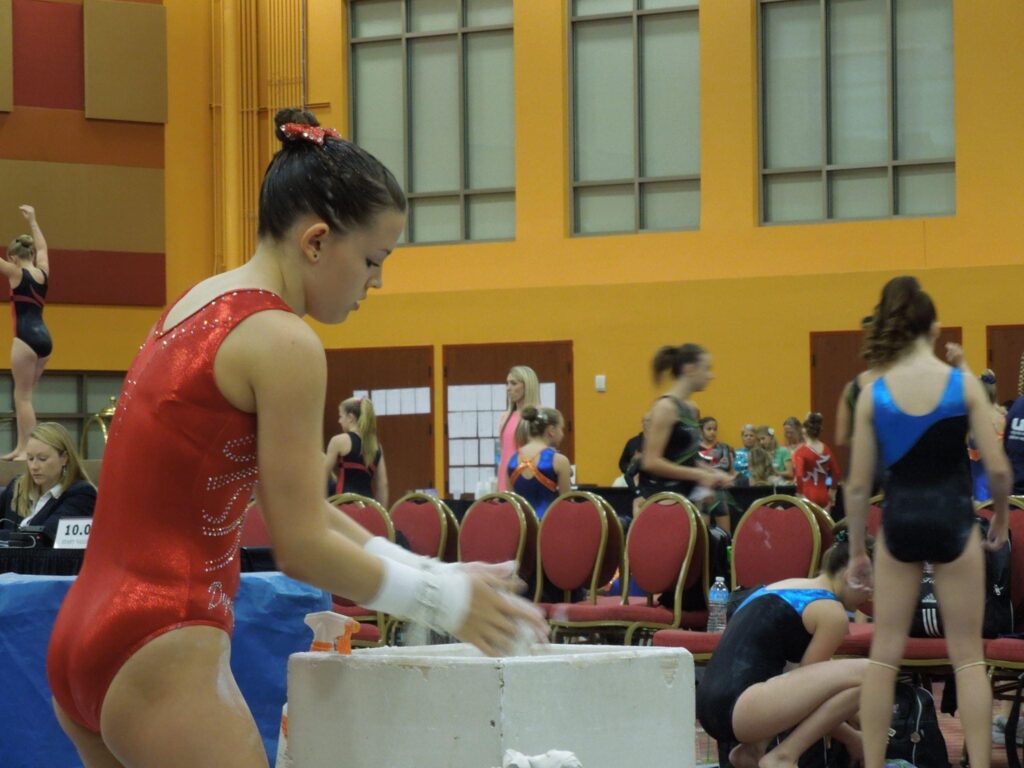
Tara: That’s an incredible story! I can’t imagine being fourteen and going from seeing a physical therapist to all of the sudden having brain surgery in a matter of days. Exactly what is it like going through those experiences and being so young?
Sarah: It was surreal. I think it was just such a whirlwind. I wasn’t thinking at the time that it was going to turn into anything big. Since it happened so fast, I don’t even remember the emotions I felt. It was like boom, boom, boom you’re here and now you’re in surgery. It didn’t really hit me until I was going into surgery and getting the IV. I don’t like needles to begin with so when they put in the IV, all the emotions just fell through and I started crying. I just started feeling all the emotions. Once they sedated me a little, I was able to calm down. I think being young also helped me get through because I didn’t really understand fully what was going on. I didn’t research anything once I got my diagnosis. If it happened to me now, I probably would be the person who goes online and end up scaring myself with what I read. I’m glad that I went through it when I was younger and I think I had a faster healing process because of my age, too.
Tarar: What is the typical age that most people are diagnosed?
Sarah: It varies. Most of the time it is diagnosed in a person’s twenties and thirties but it just depends on the person. Some people get syringomyelia and some don’t. Some people don’t really experience a lot of symptoms with it, either. When I was younger, especially my middle school years, I was experiencing a lot of headaches and muscle tension in my shoulders but we thought it was due to carrying a heavy backpack or from gymnastics. Actually, though, common symptoms for a lot of people are headaches and muscle tension. Some people do get diagnosed as children, too, even as young as two years old. Then some people get diagnosed in their adulthood. It really depends on the symptoms because if you don’t have symptoms, then you don’t know that something is wrong. I have even heard stories of people who got into a car accident or another traumatic accident and then get an MRI and that is how they find out that they have Chiari. They would have had no idea otherwise.
Tara: That’s crazy! I can’t imagine finding that out from a car accident. How do you tell new people in your life about your chronic illness? How does it usually come up?
Sarah: I’m definitely open about it. I like people to know, especially if I’m having a rough day. I like people to know what I’m going through. The way it comes up with new people in my life just depends. Sometimes I’ll have to take a pill while I’m with people and they ask if I am okay so I take that opportunity to explain what I am living with and let them know that there are certain things that I can’t do as well as other people. I’ve been go-karting and that’s not good for my head so I’ll explain to other people that it definitely can cause an issue. I like to tell people my story. It is usually a shock factor when people find out that I don’t have feelings in my arms. It’s just something I live with so it comes up in casual conversation or I’ll just share it with people since it’s such a big part of my life.
Tara: You said this is not a very well-known condition. Are there any misconceptions about your symptoms that people have when you tell them? How do you address those misconceptions?
Sarah: For me, my symptoms are invisible. You wouldn’t look at me and know that I have nerve damage in my arms called Cape syndrome. Cape syndrome is like if you put a cape on it basically spams from my arms all the way through my upper back, down my other arms, and then sometimes gets into my chest and my upper left side of my face. You can’t see it but I’m feeling numbness, tingling, and burning sensations all day long. The misconception is that I’m fine because I look fine. I’m sure that’s what most people living with chronic illnesses experience but you never know what somebody struggling with pain-wise. A lot of people with Chiari actually have headaches which is the most common symptom. I do suffer from those, as well, but it’s more in the base of the skull so, at certain times, I’ll have flare-ups of pain. People will ask why I am acting weird so I inform them that just because people look fine doesn’t mean they are fine. Also, a lot of people struggle with mental pain so I always preach that you never know what someone’s going through.
Tara: Absolutely! Some of our community members might be dealing with this themselves or have a loved one who has been diagnosed with Chiari. Do you have any advice for them?
Sarah: Yes, I would say that it is most important to have a strong support system in your life. Obviously, we know our loved ones can’t fix it as much as they wish they could but just having a support system has been the biggest help to me in my whole journey. It helps to have people with me who understand what I am going through. My family was a huge support. They always were at the hospital with me supporting me through all of that finding the best doctors so I would just say you know being a support system and even on your bad days just holding them we know you know things will eventually feel okay so at some point but just of embracing them the bad days knowing that you know it hurts right now I’m going to be okay but I just need someone to cry to that’s good I like that
Tara: You mentioned that you healed quickly after the surgery and wanted to get back to school. It seems like you had pretty high spirits throughout this whole experience. Many times chronic illness can get us in a really negative headspace and have us feeling down. How did you combat that and stay positive?
Sarah: I definitely had my bad days and still do. It can be frustrating since it’s out of your control but I would say that just having my support system around me and just embracing that sometimes I don’t feel well has helped. Today I let myself feel whatever emotion I am feeling and find things to distract myself with that I enjoy to help me cope. I know that this is something that I’m going to have to go with for a long time but there are better days ahead. There are things that I want to live for and things that I want to enjoy in life. I choose to look forward to those things instead of letting it drag me down too far.
Tara: Absolutely! Moving forward will you mostly deal with the same symptoms from day to day or is there any possibility that more issues will arise?
Sarah: There are other surgeries that I could get for ulnar neuropathy but doctors did say that it wouldn’t relieve any symptoms. I don’t want to put myself through more surgery or more treatment. Right now I do have the symptoms. I also have a lot of back pain which could be from gymnastics, as well, but the Chiari doesn’t help. I do different therapies including massage therapy which seems to help. I also try new things that might help relieve the symptoms a little bit but right now there’s nothing else I need to go have done with doctors. I also manage the pain with medication.
Tara: Where can our followers find you if they want to continue along your journey with you?
Sarah: Mostly, I post about Chiari on Facebook under Sarah Kash. Last September was Chiari Malformation, Awareness Month, so I was actually sharing a lot of information on symptoms and diagnosis and just things about Chiari, so that’s where I would say post most about Chiari. And then I do also have an Instagram which is just Sarah_Kash and I do post occasionally on there as well.
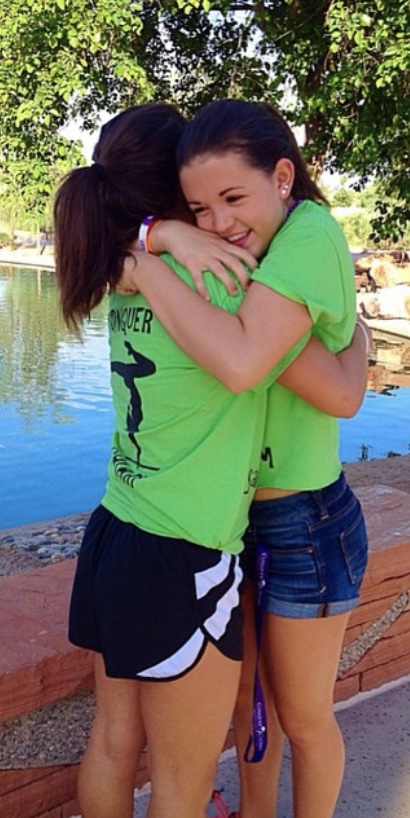
Tara: Awesome! Well, it’s been great having you share your story. You’re absolutely incredible. I love your attitude and think you can really inspire a lot of people with whatever illness they may be going through.
Sarah: That’s definitely my goal. I think people who have had the same issues in life and chronic pain definitely need to stick together.
Tara: Absolutely, I’m Tara and on behalf of Situation Positive. Sarah, we want to thank you for being on today.
Sarah: Thank you so much for having me.
Tara: Of course and go ahead follow us on social media so you can be informed and stay along with Situation Positive and we’ll see you guys next time.
Podcast: Play in new window | Download (Duration: 19:39 — 36.0MB)

